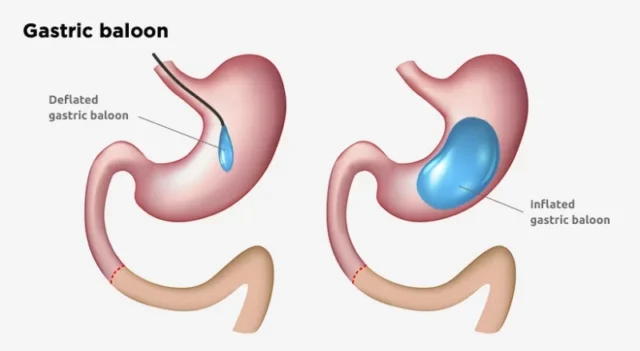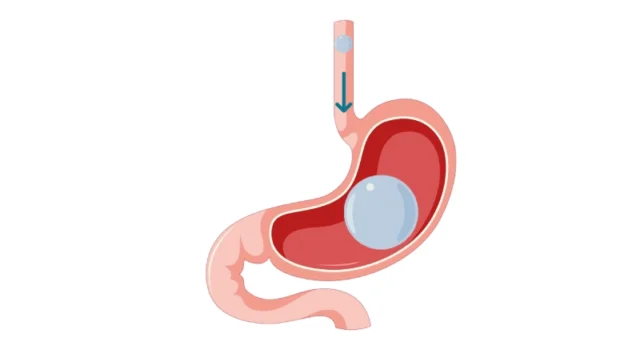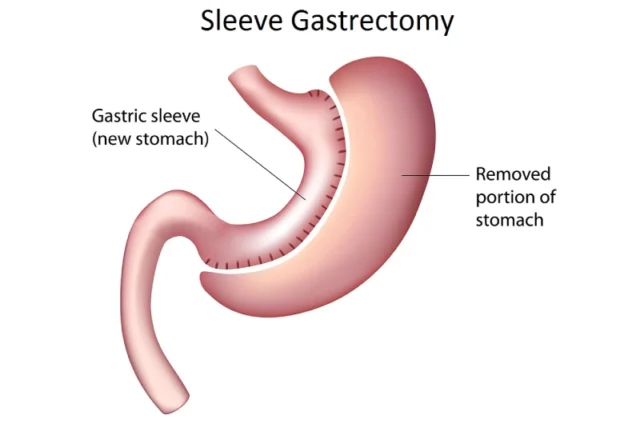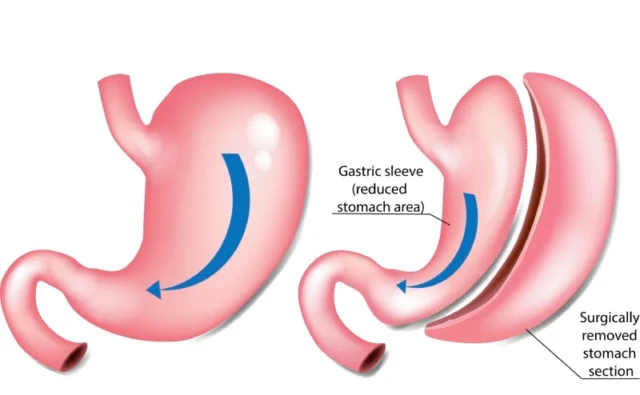Navigating the journey of weight loss can often feel overwhelming, especially when it comes to choosing the right surgical option for your needs. Among the most discussed procedures today are the gastric balloon and gastric sleeve surgeries, both designed to help you achieve significant weight loss, yet differing greatly in approach and outcomes. The gastric balloon, a non-invasive option, offers a temporary solution that helps curb hunger by occupying space in the stomach. In contrast, the gastric sleeve involves permanent alterations to your stomach, promoting lasting lifestyle changes. Each option has its unique benefits and considerations, making it crucial for you to weigh your choices carefully. As you embark on this transformative path, understanding the differences between gastric balloon and gastric sleeve can empower you to make the decision that aligns best with your health goals and lifestyle. Let’s explore these two popular procedures to determine which weight loss surgery is right for you.
Understanding Weight Loss Surgery Options
Weight loss surgery has become a beacon of hope for many individuals struggling with obesity. These surgical interventions are not just about shedding pounds; they are about improving overall health, boosting self-esteem, and enhancing quality of life. There are various types of weight loss surgeries available, each with its own set of advantages, risks, and qualifications. The two most commonly discussed options today are the gastric balloon and gastric sleeve surgeries. Both of these methods aim to help individuals achieve significant weight loss, but they do so in markedly different ways.
The decision to undergo weight loss surgery is deeply personal and often involves considerable research, consultations with healthcare professionals, and self-reflection. It is essential to understand the mechanics, benefits, and potential drawbacks of each option to make an informed decision that aligns with your health and lifestyle goals. This understanding will not only prepare you for the procedure itself but also for the changes and commitments that come afterward.
In this article, we will delve into the specifics of the gastric balloon and gastric sleeve surgeries. We will explore how each procedure works, the benefits they offer, and the factors you need to consider when deciding which one might be the best fit for you. By the end of this discussion, you should have a clearer picture of what each surgery entails and how it can help you in your weight loss journey.
What is a Gastric Balloon?
The gastric balloon, also known as an intragastric balloon, is a non-surgical weight loss procedure designed to help individuals lose weight by reducing their food intake. This method involves placing a soft, silicone balloon inside the stomach, which is then filled with saline solution. The balloon takes up space in the stomach, making the person feel fuller faster and with less food. This reduced hunger and increased satiety can lead to significant weight loss over time.
One of the most appealing aspects of the gastric balloon is its non-invasive nature. Unlike other weight loss surgeries that require incisions and permanent alterations to the digestive system, the gastric balloon is placed endoscopically. This means it is inserted through the mouth and down the esophagus into the stomach, a process that typically takes about 20-30 minutes and is performed under mild sedation.
The gastric balloon is designed to be a temporary solution, usually left in the stomach for about six months. After this period, it is removed in a similar endoscopic procedure. During the time the balloon is in place, individuals are encouraged to adopt healthier eating habits and lifestyle changes that will help them maintain their weight loss after the balloon is removed. This aspect of the gastric balloon procedure underscores the importance of viewing it not just as a quick fix, but as a tool to kickstart a long-term commitment to healthier living.
How Does Gastric Balloon Surgery Work?
The process of gastric balloon surgery begins with a thorough medical evaluation to ensure that the individual is a suitable candidate for the procedure. This evaluation typically includes a physical examination, blood tests, and possibly imaging studies to assess the stomach’s condition. Once cleared for the procedure, the patient will undergo an endoscopy, where a thin, flexible tube with a camera is inserted through the mouth into the stomach to inspect the area and confirm that it is safe to place the balloon.
After the initial endoscopic examination, the deflated balloon is passed through the mouth and esophagus into the stomach. Once in place, the balloon is filled with saline solution, which expands it to about the size of a grapefruit. The filled balloon occupies a significant portion of the stomach, which helps to limit the amount of food the stomach can hold and increases the feeling of fullness. This reduction in stomach capacity is what helps to control hunger and reduce food intake.
During the six months that the balloon is in place, patients work closely with a healthcare team, including dietitians and Gastric Balloon vs. Gastric Sleeve: Which Weight Loss Surgery Is Right for You?
Navigating the journey of weight loss can often feel overwhelming, especially when it comes to choosing the right surgical option for your needs. Among the most discussed procedures today are the gastric balloon and gastric sleeve surgeries, both designed to help you achieve significant weight loss, yet differing greatly in approach and outcomes. The gastric balloon, a non-invasive option, offers a temporary solution that helps curb hunger by occupying space in the stomach. In contrast, the gastric sleeve involves permanent alterations to your stomach, promoting lasting lifestyle changes. Each option has its unique benefits and considerations, making it crucial for you to weigh your choices carefully. As you embark on this transformative path, understanding the differences between gastric balloon and gastric sleeve can empower you to make the decision that aligns best with your health goals and lifestyle. Let’s explore these two popular procedures to determine which weight loss surgery is right for you.
Understanding Weight Loss Surgery Options
Weight loss surgery, also known as bariatric surgery, has become an increasingly popular option for individuals struggling with obesity. This type of surgery is not just about losing weight; it is about improving overall health and quality of life. For many, diet and exercise alone are not enough to achieve significant weight loss, and bariatric surgery offers a viable solution. The main goal of weight loss surgery is to reduce the stomach’s capacity to hold food, thereby decreasing calorie intake and promoting weight loss.
There are several types of weight loss surgery, each with its own methodology, benefits, and risks. Choosing the right procedure depends on various factors, including the patient’s medical history, weight loss goals, and lifestyle. Some of the most common bariatric surgeries include gastric bypass, adjustable gastric banding, gastric sleeve, and gastric balloon. Each of these procedures has its unique approach to helping patients achieve their weight loss goals.
In this article, we will focus on two popular weight loss surgeries: the gastric balloon and the gastric sleeve. Both of these procedures are designed to help patients lose weight, but they do so in very different ways. Understanding the differences between these two options, including how they work, their benefits, and their potential risks, can help you make an informed decision about which procedure is right for you.
What is a Gastric Balloon?
The gastric balloon is a non-surgical weight loss procedure that involves placing a soft, silicone balloon inside the stomach. This balloon is filled with saline solution or gas, which takes up space in the stomach and helps patients feel full more quickly. The idea behind the gastric balloon is to reduce the amount of food the stomach can hold, thereby decreasing calorie intake and promoting weight loss. The gastric balloon is a temporary solution, typically left in place for six months before being removed.
One of the main advantages of the gastric balloon is that it is a non-invasive procedure. Unlike other weight loss surgeries, the gastric balloon does not require any incisions or permanent alterations to the stomach. The balloon is inserted through the mouth and esophagus using an endoscope, a flexible tube with a camera and light. This makes the procedure relatively quick and easy, with minimal downtime and a lower risk of complications compared to more invasive surgeries.
The gastric balloon is often recommended for individuals who need to lose a moderate amount of weight and are looking for a temporary solution to jumpstart their weight loss journey. It can be particularly beneficial for patients who are not candidates for more invasive surgeries due to medical reasons or who prefer a less permanent option. However, it is important to note that the gastric balloon is not a long-term solution, and patients will need to adopt healthy eating habits and regular exercise to maintain their weight loss after the balloon is removed.
How Does Gastric Balloon Surgery Work?
The process of getting a gastric balloon involves a few key steps. First, the patient undergoes a thorough medical evaluation to determine if they are a suitable candidate for the procedure. This includes a review of their medical history, a physical examination, and possibly some additional tests to assess their overall health and fitness for the procedure. If the patient is deemed a good candidate, the procedure is scheduled.
On the day of the procedure, the patient is given a mild sedative to help them relax. The gastric balloon is then inserted into the stomach through the mouth and esophagus using an endoscope. Once the balloon is in place, it is filled with saline solution or gas, depending on the type of balloon being used. The entire procedure typically takes about 20 to 30 minutes, and most patients can go home the same day.
After the balloon is in place, the patient will need to follow a special diet to help their stomach adjust to the balloon. This usually involves starting with liquids and gradually progressing to soft foods and then regular foods over the course of a few weeks. The goal is to help the patient feel full more quickly and eat smaller portions, leading to a reduction in calorie intake and weight loss. The balloon is typically left in place for six months, after which it is removed in a similar procedure to the insertion.
Benefits of Gastric Balloon Surgery
There are several benefits to choosing gastric balloon surgery as a weight loss option. One of the main advantages is that it is a non-surgical procedure, meaning it does not require any incisions or permanent alterations to the stomach. This makes it a less invasive option with a lower risk of complications compared to more invasive surgeries. It also means that the recovery time is relatively short, and most patients can return to their normal activities within a few days.
Another benefit of the gastric balloon is that it is a temporary solution, which can be appealing to individuals who are not ready to commit to a permanent weight loss surgery. The balloon is typically left in place for six months, giving patients a chance to jumpstart their weight loss and develop healthy eating habits without the need for a permanent procedure. This can be particularly beneficial for individuals who need to lose a moderate amount of weight or who are not candidates for more invasive surgeries.
The gastric balloon can also be an effective weight loss tool. Studies have shown that patients who undergo gastric balloon surgery can lose a significant amount of weight, with some losing up to 30% of their excess weight within the first six months. This weight loss can lead to improvements in overall health, including reductions in blood pressure, cholesterol levels, and blood sugar levels, as well as improvements in mobility and quality of life.
What is Gastric Sleeve Surgery?
Gastric sleeve surgery, also known as sleeve gastrectomy, is a type of bariatric surgery that involves permanently removing a large portion of the stomach. During the procedure, approximately 75-80% of the stomach is removed, leaving a small, tube-shaped stomach, or “sleeve.” This smaller stomach can hold much less food than the original, which helps patients feel full more quickly and eat smaller portions. The procedure also reduces the production of the hunger hormone ghrelin, which can help reduce appetite and promote weight loss.
Unlike the gastric balloon, gastric sleeve surgery is a permanent solution. The procedure is typically performed laparoscopically, which means that it is done through small incisions using a camera and specialized instruments. This minimally invasive approach can result in less pain, a shorter hospital stay, and a quicker recovery compared to traditional open surgery. However, it is still a major surgical procedure with its own risks and potential complications.
Gastric sleeve surgery is often recommended for individuals who have a significant amount of weight to lose and who have not been successful with other weight loss methods. It can be particularly beneficial for patients with obesity-related health conditions, such as type 2 diabetes, hypertension, or sleep apnea, as the weight loss achieved through the procedure can lead to significant improvements in these conditions. However, it is important to note that gastric sleeve surgery is a permanent solution, and patients will need to commit to lifelong changes in their eating habits and lifestyle to maintain their weight loss.
How Does Gastric Sleeve Surgery Work?
The process of getting gastric sleeve surgery begins with a thorough medical evaluation to determine if the patient is a suitable candidate for the procedure. This includes a review of their medical history, a physical examination, and possibly some additional tests to assess their overall health and fitness for surgery. If the patient is deemed a good candidate, the procedure is scheduled, and the patient will need to follow a pre-operative diet to help prepare their body for the surgery.
On the day of the surgery, the patient is given general anesthesia to ensure they are comfortable and pain-free during the procedure. Gastric sleeve surgery is typically performed laparoscopically, which involves making several small incisions in the abdomen. A laparoscope, a thin tube with a camera and light, is inserted through one of the incisions, allowing the surgeon to see inside the abdomen. Specialized surgical instruments are inserted through the other incisions to remove a large portion of the stomach, leaving a small, tube-shaped “sleeve.”
After the surgery, the patient will need to stay in the hospital for a few days to recover. During this time, they will be closely monitored for any complications and will be given instructions on how to care for themselves at home. The patient will need to follow a special diet after the surgery, starting with liquids and gradually progressing to soft foods and then regular foods over the course of several weeks. The goal is to help the stomach heal and to help the patient adjust to their new, smaller stomach.
Benefits of Gastric Sleeve Surgery
Gastric sleeve surgery offers several benefits for individuals seeking a permanent weight loss solution. One of the main advantages of the procedure is its effectiveness. Studies have shown that patients who undergo gastric sleeve surgery can lose a significant amount of weight, with many losing up to 60-70% of their excess weight within the first year. This weight loss can lead to significant improvements in overall health, including reductions in blood pressure, cholesterol levels, and blood sugar levels, as well as improvements in mobility and quality of life.
Another benefit of gastric sleeve surgery is that it is a permanent solution. Unlike the gastric balloon, which is a temporary option, gastric sleeve surgery involves permanently removing a large portion of the stomach, which can help ensure long-term weight loss. This can be particularly beneficial for individuals who have a significant amount of weight to lose and who have not been successful with other weight loss methods. The procedure also reduces the production of the hunger hormone ghrelin, which can help reduce appetite and promote weight loss.
Gastric sleeve surgery is also a minimally invasive procedure, which can result in less pain, a shorter hospital stay, and a quicker recovery compared to traditional open surgery. The procedure is typically performed laparoscopically, which involves making several small incisions in the abdomen and using specialized instruments to remove a large portion of the stomach. This minimally invasive approach can help reduce the risk of complications and improve the overall recovery experience for patients.
Comparing Gastric Balloon and Gastric Sleeve: Key Differences
When comparing the gastric balloon and gastric sleeve surgeries, it is important to understand the key differences between these two procedures. One of the main differences is the nature of the procedures themselves. The gastric balloon is a non-surgical, temporary solution, while the gastric sleeve is a surgical, permanent solution. This means that the gastric balloon does not require any incisions or permanent alterations to the stomach, while the gastric sleeve involves permanently removing a large portion of the stomach.
Another key difference is the duration of the results. The gastric balloon is typically left in place for six months, after which it is removed, making it a temporary solution. Patients will need to adopt healthy eating habits and regular exercise to maintain their weight loss after the balloon is removed. In contrast, the gastric sleeve is a permanent solution, and the weight loss achieved through the procedure can be long-lasting. However, patients will still need to commit to lifelong changes in their eating habits and lifestyle to maintain their weight loss.
The effectiveness of the procedures also differs. While both the gastric balloon and gastric sleeve can result in significant weight loss, the amount of weight loss achieved with the gastric sleeve is typically greater. Studies have shown that patients who undergo gastric sleeve surgery can lose up to 60-70% of their excess weight within the first year, while patients with the gastric balloon can lose up to 30% of their excess weight within the first six months. The more significant weight loss achieved with the gastric sleeve can lead to greater improvements in overall health and quality of life.
Factors to Consider When Choosing Between Gastric Balloon and Gastric Sleeve
When deciding between the gastric balloon and gastric sleeve surgeries, there are several factors to consider. One of the most important factors is the patient’s weight loss goals. The gastric balloon is a good option for individuals who need to lose a moderate amount of weight and are looking for a temporary solution to jumpstart their weight loss journey. The gastric sleeve, on the other hand, is a better option for individuals who have a significant amount of weight to lose and are looking for a permanent solution.
Another factor to consider is the patient’s medical history and overall health. The gastric balloon is a less invasive procedure with a lower risk of complications, making it a good option for individuals who are not candidates for more invasive surgeries due to medical reasons. The gastric sleeve is a more invasive procedure with a higher risk of complications, but it can be particularly beneficial for individuals with obesity-related health conditions, such as type 2 diabetes, hypertension, or sleep apnea, as the weight loss achieved through the procedure can lead to significant improvements in these conditions.
The patient’s lifestyle and preferences are also important factors to consider. The gastric balloon is a temporary solution, which can be appealing to individuals who are not ready to commit to a permanent weight loss surgery. The gastric sleeve is a permanent solution, which can provide long-lasting weight loss but requires a lifelong commitment to healthy eating habits and regular exercise. It is important for patients to consider their own preferences and lifestyle when deciding which procedure is right for them.
Conclusion: Making an Informed Decision
Choosing the right weight loss surgery is a significant decision that requires careful consideration of the various options available. Both the gastric balloon and gastric sleeve surgeries offer unique benefits and considerations, making it crucial for patients to weigh their choices carefully. The gastric balloon is a non-surgical, temporary solution that can help jumpstart weight loss for individuals who need to lose a moderate amount of weight. The gastric sleeve is a surgical, permanent solution that can provide long-lasting weight loss for individuals with a significant amount of weight to lose.
When deciding between these two procedures, it is important to consider factors such as weight loss goals, medical history, overall health, lifestyle, and personal preferences. Consulting with a qualified bariatric surgeon can also provide valuable insights and guidance to help patients make an informed decision. Ultimately, the goal is to choose the weight loss surgery that aligns best with the patient’s health goals and lifestyle, allowing them to achieve significant weight loss and improve their overall health and quality of life.






